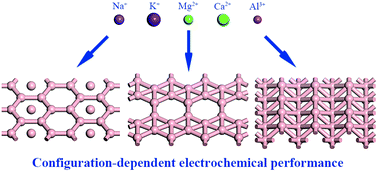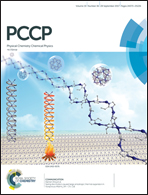Metallic borophene polytypes as lightweight anode materials for non-lithium-ion batteries†
Abstract
Applications of rechargeable non-lithium-ion batteries (Na+, K+, Ca2+, Mg2+, and Al3+ NLIBs) are significantly hampered by the deficiency of suitable electrode materials. Searching for anode materials with desirable electrochemical performance is urgent for the large-scale energy storage demands of next generation renewable energy technologies. In this study, three types of recently synthesized borophenes are predicted to serve as high-performing anodes for NLIBs based on density functional theory. All the borophenes considered here are metallic with favorable in-plane stiffness. Dirac fermions were identified in two types of borophenes, guaranteeing their high electron mobility. Moreover, borophene configuration-dependent metal-ion migration, theoretical capacities, and open-circuit voltages were demonstrated with respect to the different adsorption behaviors and atom mass densities of anode materials. Our results provide insights into the configuration-dependent electrode performance of borophene and the corresponding metal-ion storage mechanism.



 Please wait while we load your content...
Please wait while we load your content...